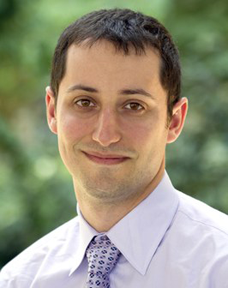Personalized Care vs Precise Care: The Geriatric Oncology Model
I would argue that the “personalized” care that geriatric oncologists are championing should be the future of oncology as much as the “precision” care of immune-based and targeted therapies.
Noam VanderWalde, MD

On the first and second day of ASCO, I’ve taken the opportunity to attend two sessions within the geriatric oncology track: “Why Functional Age Matters: Care for Older Patients With Prostate and Bladder Cancer” and “Developing a Geriatric Oncology Presence at Your Academic Institution or Community-Based Practice.” Although these sessions did not garner as much interest as those on immunotherapies or targeted drugs, I would argue that the “personalized” care that these geriatric oncologists are championing should be the future of oncology as much as the “precision” care of immune-based and targeted therapies.
Over the last 3 years, I have heard multiple talks from geriatricians and geriatric oncologists, and they almost all start out the same way: The population is aging, the number of older patients with cancer is increasing, older patients are under-represented in clinical trials, and there is a large deficit of knowledge about what to do for these patients in everyday clinic. I’m sure if you asked any of these speakers they would tell you that they have used the same introductory slides for all of their talks over the last 5 to 10 years: I can certainly remember seeing some of these slides in other settings. The need to make these points likely arises from the history of geriatrics within oncology care. Oncologists interested in geriatrics had to defend their interest and explain why older sicker patients were different from their younger healthier counterparts and how studying and caring for these patients was important. With the increase age of the population, the older patient is no longer rare; they are the norm.
The model that has been championed by geriatricians is to stage both the cancer and the age of the patient. What does it mean to stage the age of the patient? Isn’t age pretty obvious? Although chronologic or calendar age has been shown in some large studies to predict for certain outcomes (overall survival, disease-free survival, toxicity), it is likely only a surrogate for something vastly more important for individual patients; functional age. Most people are aware that not all 75-year-olds can function equally. I’ve met a 78-year-old who continues to win gold medals in the senior Olympics in swimming, and I’ve met a 72-year-old who can’t walk more than 20 feet without getting short of breath. Many geriatric oncology clinics are using geriatric assessments to give a better understanding of the overall health and functional age of the patient to hopefully allow us to make better cancer treatment decisions. Although the data is still maturing and there are many questions that still need to be answered, this type of personalized therapy will hopefully lead to more effective therapy and better overall care of this population.
Many geriatric oncologists like to describe a silver tsunami: a wave of older patients bearing down on the oncology physicians of the future. I’m not sure if this wave is bearing down or if it has already broken. There is little doubt that most oncologists have noticed an increase in the number of 70- and 80-year-olds in their clinic, and this is a trend not likely to change for the near future. I would argue that every oncologist, not just those interested in geriatrics, should consider implementing some model of staging the age and functional status of their older patients. This will hopefully lead to a new era in oncology where both precision/targeted therapy can combine with “personalized” care to lead to optimal outcomes for the majority of our patients.